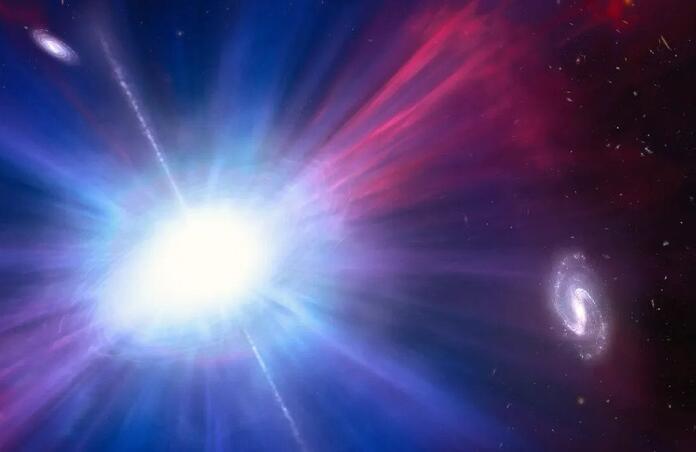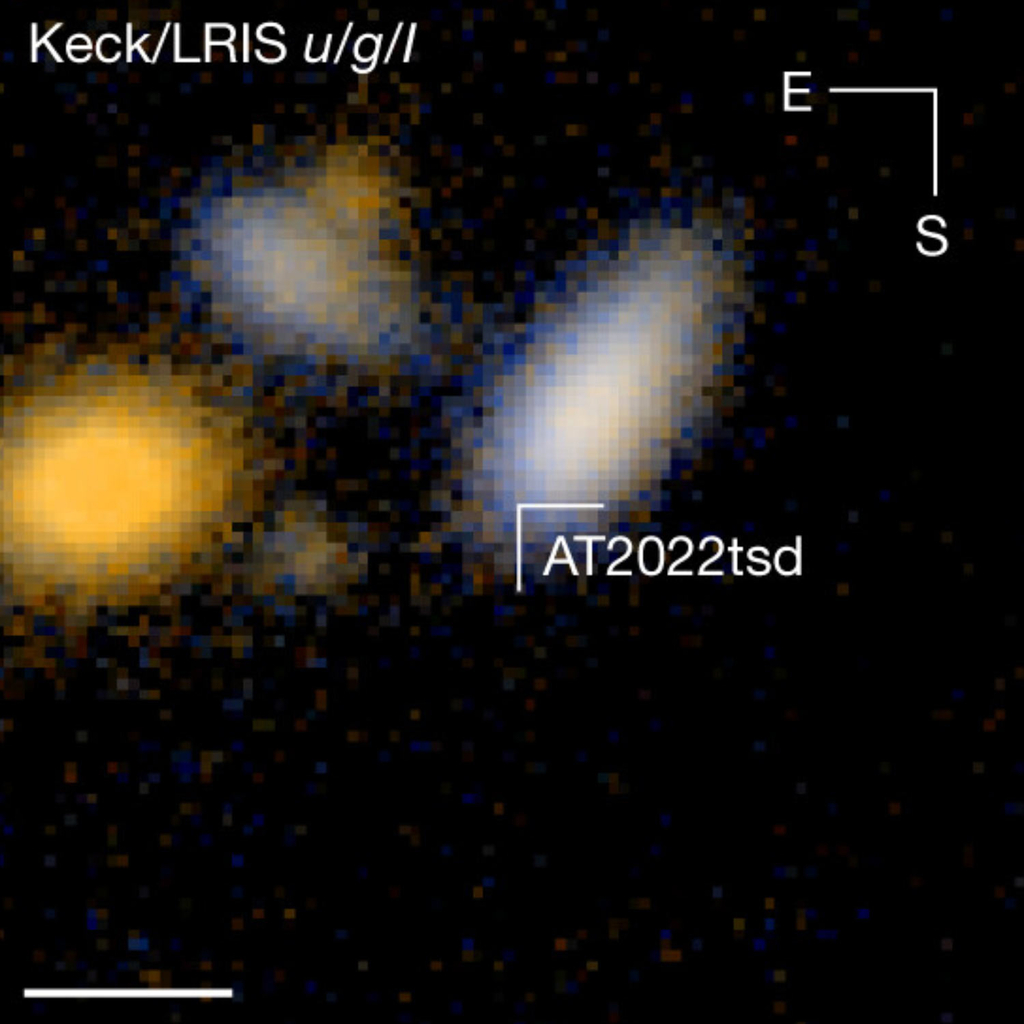Stellar corpse explosion confuses astronomers

Nicknamed the Tasmanian devil, a cosmic explosion has baffled astronomers due to it flashing at peak brightness over a dozen times several months following the initial stars eruptive death - something astronomers have never seen before. Although confusing, this observation may aid in explaining what could cause these rare explosions, dubbed as luminous fast blue optical transients (LFBOTs).
LFBOTs have been observed across the universe yet lack an explanation. The first of these volatile events was discovered in 2018, dubbed the Cow after its designation AT2018cow. The transient was found in a galaxy located around 60 million parsecs from Earth. The Cow was unlike other phenomenon seen before, being up to 100 times brighter than a supernova, and subsequently dimming over a few days, a process that would take weeks for a supernova. Several LFBOTs have been found since, named after various animals such as the Koala, the Camel and the Finch. However, despite being studied by 15 telescopes from across the globe, it is still unknown what causes these events.
The leading theories behind such explosions are failed supernovae, where stars collapse into a black hole or neutron star before exploding, intermediate mass black holes consuming other stars, or the result of an objects interaction with Wolf-Rayet stars, which are particularly hot and bright.

A team led by Anna Ho, astronomer at Cornell University in Ithaca have recently published a study in the journal Nature, detailing new activity from an LFBOT called AT2022tsd, or the Tasmanian Devil. The LFBOT was discovered in September 2022 located 1 billion parsec away. The mysterious event was flagged thanks to the help of the software that Ho wrote, sifting through the plethora of transients detected in the all-sky survey conducted by the Zwicky Transient Facility. Investigating this interesting event further, the team called for the collaboration of others, who contributed observations from over a dozen different telescopes, including one with a high speed camera. After ruling out other possible light sources, they finalised at least 14 irregular light pulses over a 120 day period, each lasting minutes long and harnessing as much power as the original explosion which occurred up to 100 days prior.
“Flashes like this haven’t been seen before in LFBOTs,” says Ho. She adds that each of the unexpected flares was “as powerful as the original LFBOT”. Ho states that the flaring may be in support of the failed supernova theory, which involves a star around 20 times the mass of the sun. Once the star runs out of fuel, it will collapse to leave a dense neutron star or black hole. “We think these flashes are probably coming from either a neutron star or a black hole that was formed in the original LFBOT event,” explains Ho.
If such a neutron star or black hole is at the centre of the LFBOT and had powerful jets of energy ejected from its poles, this may provide an explanation for the bright flashes. As the object rotates, jets would fire out into space and thus would be observed as flares if they pointed Earths direction.
These observations also support what was previously found from other evidence. “Namely, that LFBOTs involve electrons that are travelling close to the speed of light being heated or accelerated in some form of outflow” explains Brian Metzger, astrophysicist at Columbia University. Further observations are needed to help determine the mass of the dazzling object, which would provide a more definitive clarification of its origin. “An intermediate mass black hole is a 10,000-solar-mass black hole,” says Ho. “A failed supernova is more like 10 or 100 solar masses. The flares could offer a way to work out the mass of the object. When you measure a fast-varying signal, you can use how quickly that signal is varying to estimate the size of the object emitting the signal.” Large speeds would indicate a rapidly rotating object, and thus a lower mass.
10 to 100 times more of these confusing objects are expected to be found by the Vera C. Rubin Observatory, currently under construction in Chile. The telescope is expected to begin a wide survey of the universe next year. For now, the crucial part is finding and studying these events early on after the initial explosion. “Right now, by the time we notice them, they’re usually two to three weeks old,” says Ho. “We need to find these a lot more quickly.” LFBOTs may provide astronomers with the opportunity of observing a star in the stage of transitioning into its afterlife.
"Because the corpse is not just sitting there, it's active and doing things that we can detect," Ho said. "We think these flares could be coming from one of these newly formed corpses, which gives us a way to study their properties when they've just been formed."
--
Cover image: NASA, ESA, NSF's NOIRLab, Mark Garlick , Mahdi Zamani
Journal source: Anna Ho, Minutes-duration optical flares with supernova luminosities, Nature (2023). DOI: 10.1038/s41586-023-06673-6. www.nature.com/articles/s41586-023-06673-6
